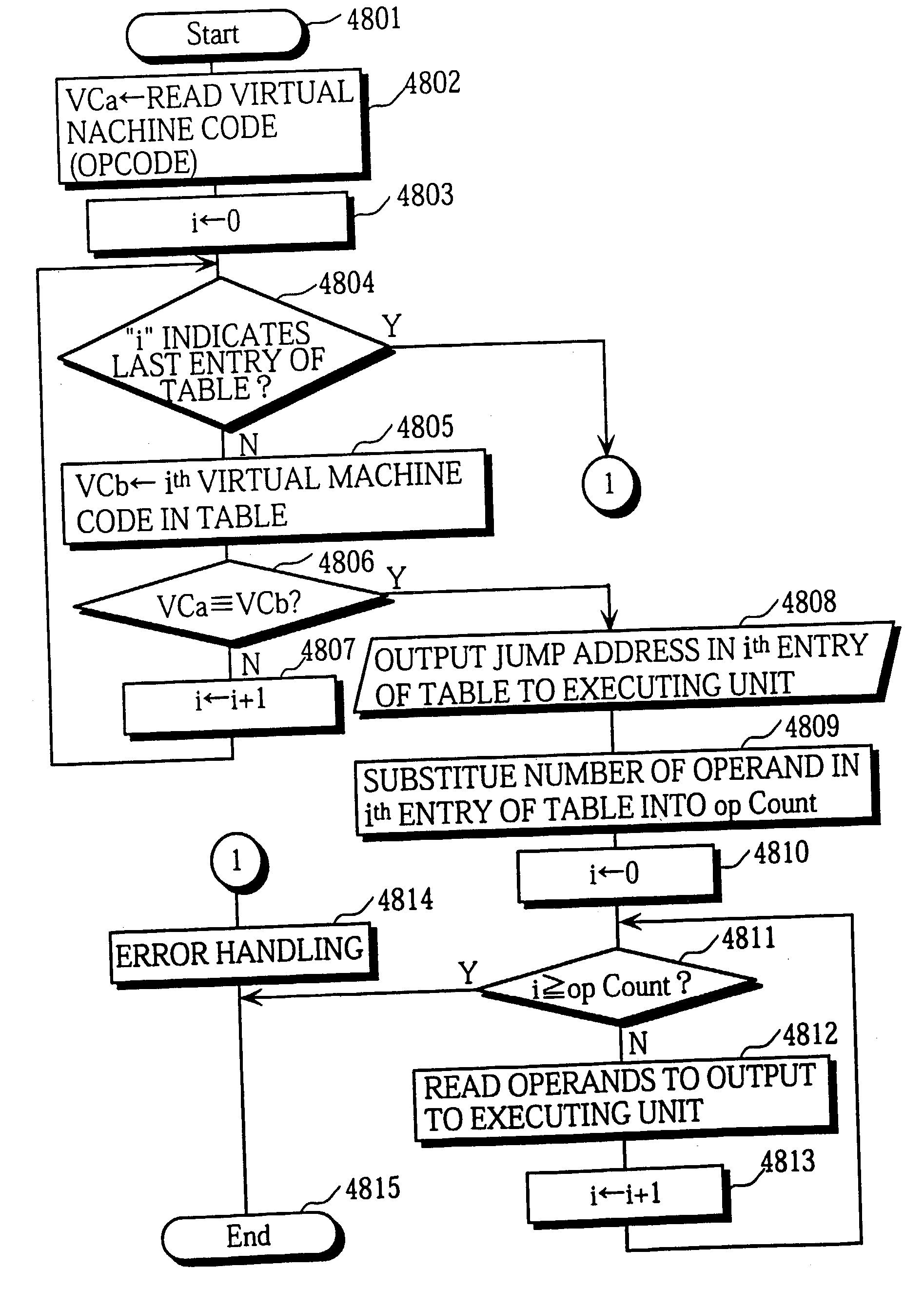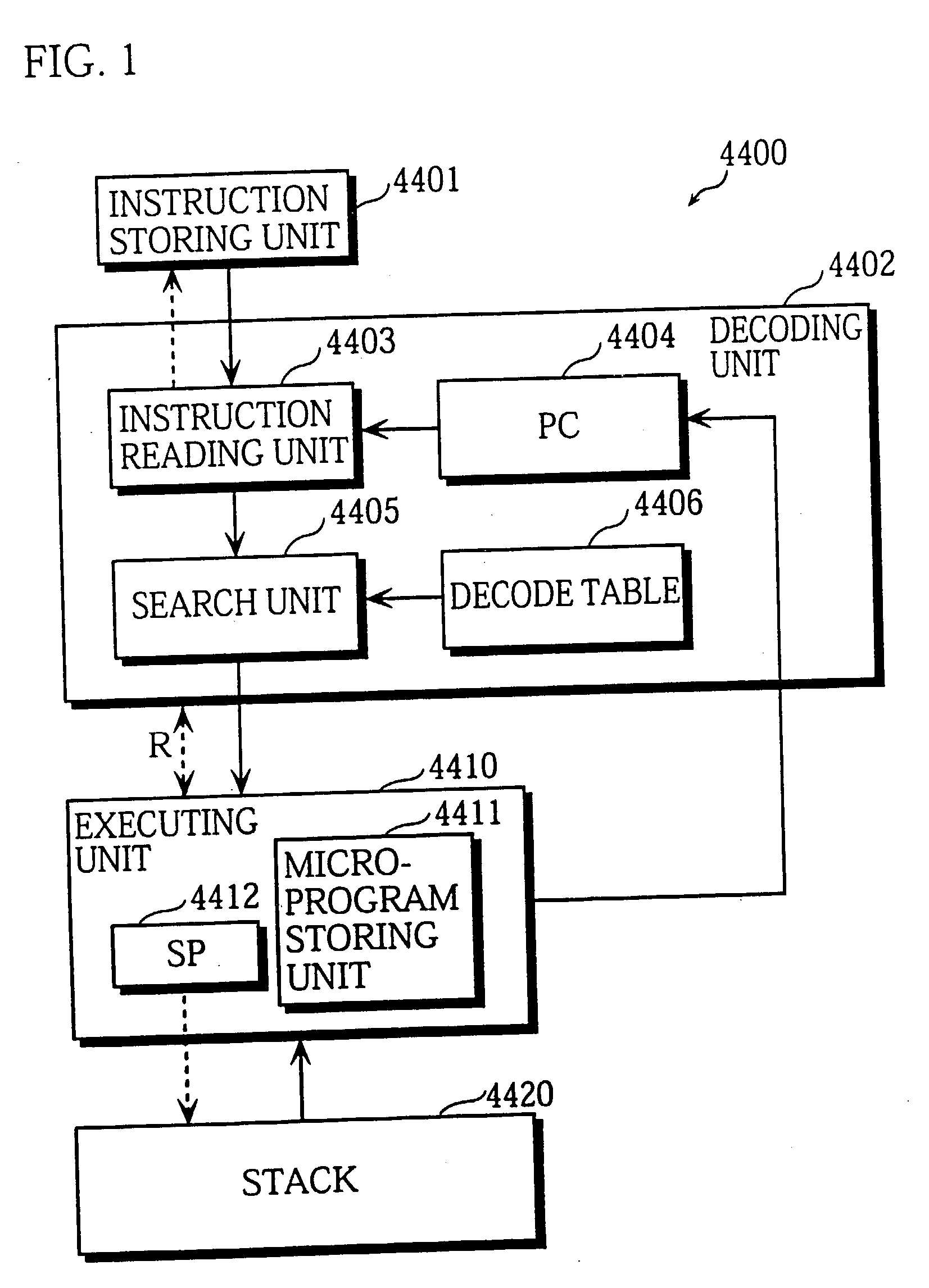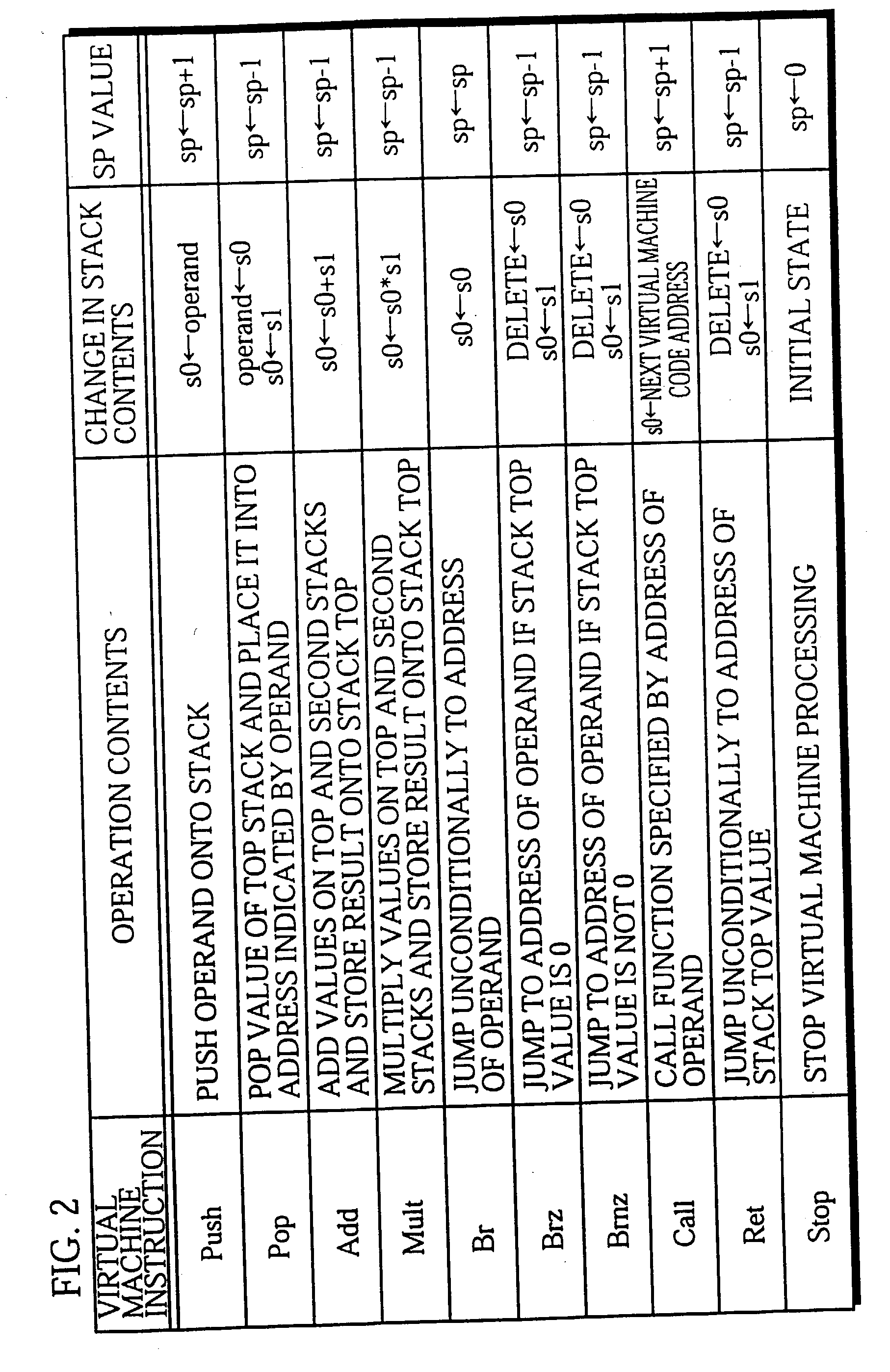High speed virtual machine and compiler
a compiler and virtual machine technology, applied in the field of virtual machines and virtual machine compilers, can solve the problems of increasing execution speed, virtual machines end up operating at a much slower speed, and maintaining high execution speed
- Summary
- Abstract
- Description
- Claims
- Application Information
AI Technical Summary
Problems solved by technology
Method used
Image
Examples
first embodiment
[0245] First Embodiment
[0246] The following describes the virtual machine system of the first embodiment that can absorb a true data dependency.
[0247] FIG. 34 shows a hardware construction of the computer system 200 that operates the virtual machine system of the present embodiment. The computer system 200 comprises a real machine 201, a memory 200, a keyboard 203, a mouse 204, a display screen 206, a hard disks 207, a network card 208, and internal busses 205A-205C that connect these elements. This hardware construction is the same as that of a normal personal computer.
[0248] The virtual machine and the virtual machine compiler of the present embodiment are programs written with instructions for the real machine 201. These programs are stored in the hard disks 207 and loaded into the memory 202 according to instructions from the user or from another program that is being executed by the real machine 201. The real machine 201 is a CPU that decodes and executes the real machine instr...
second embodiment
[0303] Second Embodiment
[0304] The following describes the virtual machine of the second embodiment, which execution rate is not affected by an interrupt processing.
[0305] Construction of the Virtual Machine
[0306] FIG. 60 is a block diagram showing the construction of the virtual machine 3500 of the present embodiment. This virtual machine 3500 includes an instruction storing unit 4401, a decoding unit 3502, an interrupt controlling unit 3510, an executing unit 4410, and a stack 4420.
[0307] As can be seen by comparing. FIG. 60 with FIG. 1, this virtual machine 3500 includes basically the same elements as the conventional virtual machine 4400. These elements in the two figures are assigned common numbers, and explanation of these elements will be omitted here.
[0308] The differences between the conventional virtual machine 4400 and this virtual machine 3500 are as follows. First, in addition to the elements included in the conventional machine 4400, this virtual machine 4400 includes ...
third embodiment
[0326] Third Embodiment
[0327] The following describes a virtual machine of the third embodiment that can perform an interrupt handling while minimizing decreases in performance efficiency.
[0328] Construction of the Virtual Machine
[0329] FIG. 64 is a block diagram showing the construction of the virtual machine 3600 of the present embodiment. This virtual machine 3600 includes an instruction storing unit 4401, a decoding unit 3502, an interrupt controlling unit 3610, an executing unit 4410, and a stack 4420.
[0330] As can be seen by comparing FIG. 64 with FIG. 60, the present virtual machine 3600 has almost the same construction as the virtual machine 3500 of the second embodiment. The differences between the two lie in a block converting unit 3605 replacing the branch instruction detecting unit 3505 of the second embodiment and in connections of the block converting unit 3605. The following explanation focuses on these differences between the present virtual machine 3600 and the virt...
PUM
 Login to View More
Login to View More Abstract
Description
Claims
Application Information
 Login to View More
Login to View More - R&D
- Intellectual Property
- Life Sciences
- Materials
- Tech Scout
- Unparalleled Data Quality
- Higher Quality Content
- 60% Fewer Hallucinations
Browse by: Latest US Patents, China's latest patents, Technical Efficacy Thesaurus, Application Domain, Technology Topic, Popular Technical Reports.
© 2025 PatSnap. All rights reserved.Legal|Privacy policy|Modern Slavery Act Transparency Statement|Sitemap|About US| Contact US: help@patsnap.com



